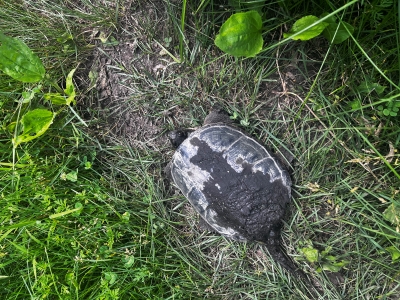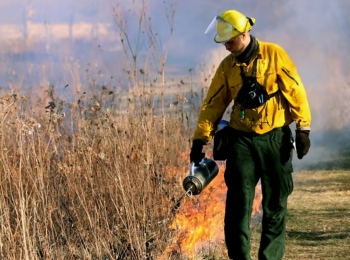During the 2023-2024 school year I focused on building relationships with my professors, especially those who I would have regularly in classes for my majors (Biology and Environmental Science). Through doing this I met two Professors, one being Rhawn Denniston, and Joshua Otten. Both played an instrumental role in my pursuit of an internship for this summer, whether that be through telling me about the application, giving me a letter of recommendation, or putting a recommendation in for me. This eventually led me to applying for and accepting a position on the Anna Beal Intern Land Stewardship crew with the Nature Conservancy.
Anna Beal is an Iowan who wanted her legacy to contribute to conservation efforts in Iowa. While not much of anything is known about her or who she was, in her last will and testament, she set up a trust to fund conservation efforts in Iowa. Specifically, her fund would give a scholarship to Iowa undergraduate students to pursue efforts in conservation. The Nature Conservancy gained the rights to this trust in 1988 and set up the Anna Beal Intern Land Stewardship program, allowing students to gain essential land stewardship skills and knowledge. The internship consists of 11 weeks under the current Nature Conservancy Iowa Land Steward team, consisting of Dale Maxson (Eastern Iowa Land Steward), Elizabeth Owens (Assistant Eastern Iowa Land Steward), James Baker (Western Iowa Land Steward) and more. They will be mentoring us in practices, goals, and skills essential to land conservation and restoration.
 Land Stewardship at The Nature Conservancy entails conservation driven by science. We evaluate the land, survey its biological diversity, stability, and historical ecology. Then, using science-driven data, we set goals and a process for which to achieve them. This process allows for a sustainable way to conserve and restore natural lands. A large part of this is building a network of partners, including locals, governments, other NGOs, and donors. This allows us to achieve large goals such as conserving 5,000 acres of land or getting private landowners to also practice conservation. An example of this that I will be working on is the Land of the Swamp White Oak, a preserve of 300,000 acres of persevered land, with the highest herp biodiversity in Iowa.
Land Stewardship at The Nature Conservancy entails conservation driven by science. We evaluate the land, survey its biological diversity, stability, and historical ecology. Then, using science-driven data, we set goals and a process for which to achieve them. This process allows for a sustainable way to conserve and restore natural lands. A large part of this is building a network of partners, including locals, governments, other NGOs, and donors. This allows us to achieve large goals such as conserving 5,000 acres of land or getting private landowners to also practice conservation. An example of this that I will be working on is the Land of the Swamp White Oak, a preserve of 300,000 acres of persevered land, with the highest herp biodiversity in Iowa.
During the first week of the internship, we focused on skill building. A key part of land stewardship is knowing the skills of the trade. This often includes, prescribed sawyer, herbicide, and bio-reconnaissance work. This week we tackled all of these. Before the internship started, my fellow interns and I completed training for Type 2 wildland firefighting. So, we completed our ELD day training where we learned to use backpack sprayers, drip torches, hose lays, re mop-up, and re shelters. 
Later the same week, we also conducted a field sweep for an endangered species of rattlesnake native to the area. This taught us the skills needed to assess the biological diversity and stability of an ecosystem, and how we keep track of population health.
“The Fire fighter Type 2 serves on a hand crew, engine crew, or helitack crew, performing re suppression and fuels management duties in the most adverse climate, fuel, and terrain conditions. The FFT2 has no supervisory responsibilities and is supervised by the Fire fighter Type 1 (FFT1) or one of the Single Resource Bosses (CRWB, HEQB, ENGB, FELB, FIRB, HMGB). The FFT2 works in the operations functional area.
The FFT2 performs position duties commensurate with Type 2 incident complexity and characteristics stated in the Interagency Standards for Fire and Fire Aviation Operations (Red Book).”
~National Wild re Coordinating Group

